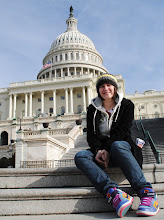 This is an example of light trails left by cars. This would be created using a slower shutter speed, with the aid of a tripod.
This is an example of light trails left by cars. This would be created using a slower shutter speed, with the aid of a tripod. This is an example of several different shutter speeds. The windmill on the left was taken using a fast shutter speed. The one in the middle using a slightly slower speed. Then the one on the right was taken using a slow shutter speed. The slower shutter speeds, give the feeling of movement in the photograph.
This is an example of several different shutter speeds. The windmill on the left was taken using a fast shutter speed. The one in the middle using a slightly slower speed. Then the one on the right was taken using a slow shutter speed. The slower shutter speeds, give the feeling of movement in the photograph. This was taken at 1/4s. The shutter wasn't open long enough to allow light into the sensor, and expose the image correctly. Leaving it very under exposed.
This was taken at 1/4s. The shutter wasn't open long enough to allow light into the sensor, and expose the image correctly. Leaving it very under exposed.Faster shutter speeds are used when you want to capture fast moving objects, such as animals or in sports photography. If you were to use a longer shutter speed while trying to photograph these, it would most likely blur the image. This can sometimes be a good thing in a photograph, as it can suggest movement in the image.
If you were to photograph water with a longer shutter speed, allowing the camera to record more of the scene, the water will look almost like fog. If you did the opposite, using a faster speed, the water would look frozen. The camera wont have been given much time to recorded the flow of water.
Longer shutter speeds are useful when trying to capture light trails. For example, if you took a photo of a car traveling at night with its lights on, using a longer shutter speed the camera would record a trail of light behind the car.
The first two images are examples of different shutter speeds, and how they can be used to create different effects in a photo.
The last six images are ones i have taken to demonstrate what happens at different shutter speeds. All photos were taken ISO 200 and at F7.1










Hi Steve here,
ReplyDeleteYou can start to tick off your met criteria on your sheet and write on it each dated blog entry, at this rate you will fly through them!!
Again keep up the personal writing alongside your experimental test shots, good evidence, can you concentrate on your main theme and research more into other photographers work linked to it.
steve
Hi
ReplyDeleteThis ticks off 1.4 and 1.6 as you are making effective use of kit and techniques are being explored.
steve